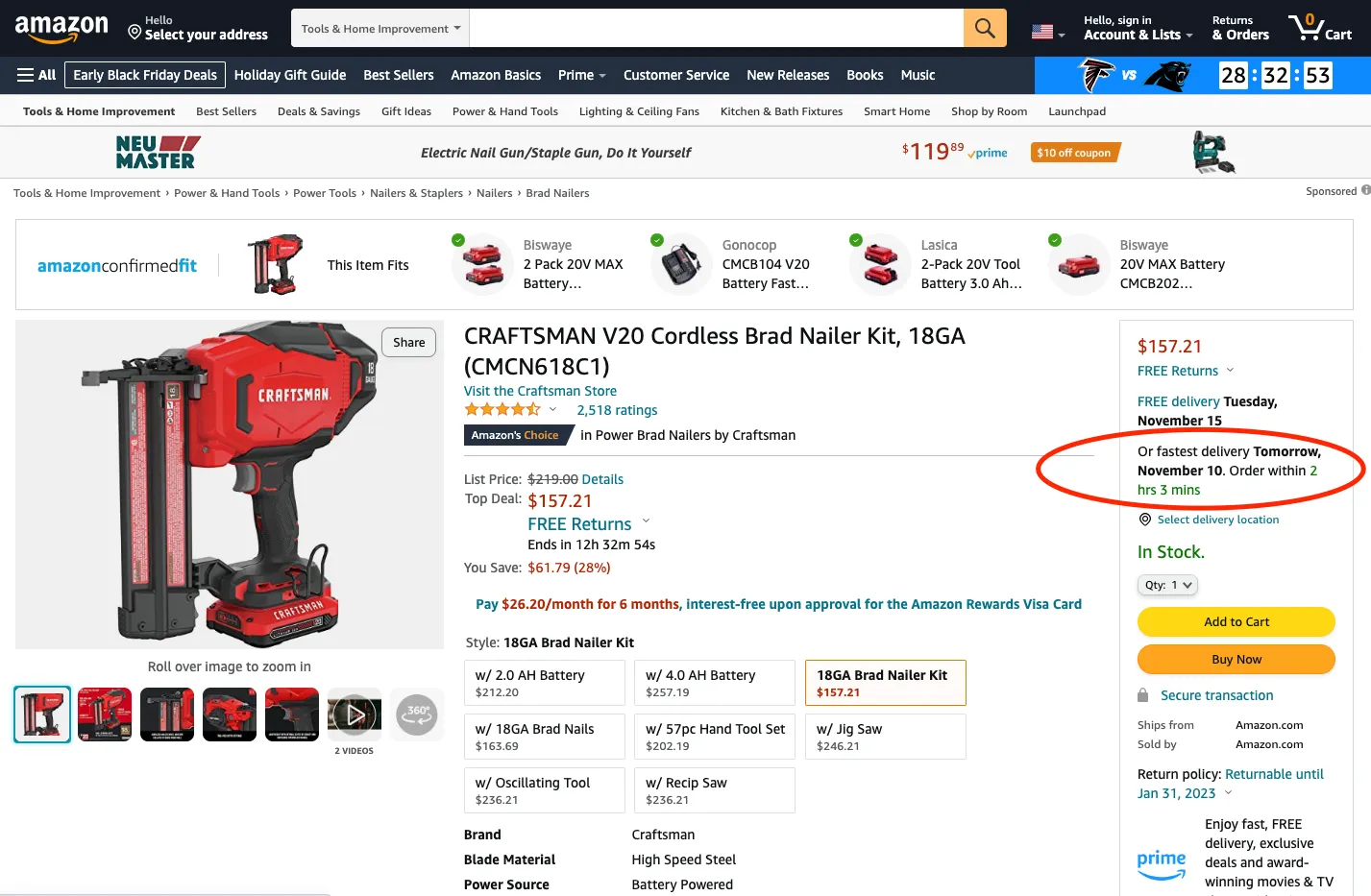
AI-powered delivery date estimates to boost conversion
Give shoppers peace of mind and protect and grow your bottom line
Personalized tracking experiences to build brand loyalty
Returns and exchanges management to mitigate fraud and reward best customers
Proactive communication to drive customer lifetime value
Delivery claim management to tackle fraud and build trust
How Estimated Delivery Dates Help Sales
%20(31).webp)
The most pressing issue on a customer’s mind when shopping online is often, “Will it arrive on time?” Providing estimated delivery dates drives sales by letting shoppers plan for exactly when an order will appear on the doorstep. In fact, 60% of shoppers are more likely to choose a retailer that can tell them the exact date a package will arrive at the time of order.
The benefits of estimated delivery dates and delivery updates create a halo effect around a transaction, improving the customer’s overall impression of the experience and helping the customer feel more confident in subsequent transactions with the retailer.
Specificity wins
Nearly half of U.S. consumers will abandon an online transaction if their delivery concerns are not addressed, so the smartest place to add estimated delivery dates is directly on the product description page. For example, many Amazon product pages include a cutoff time to receive an order by a certain delivery date (“Delivery Thursday, December 3. Order within 1 hr 7 mins”) Including a cutoff time for next-day or second-day delivery creates a sense of urgency around the purchase.

Keep in mind that individual item delivery dates are better than blanket statements about guaranteed delivery deadlines.
Retailers often use website banners and marketing emails to communicate deadlines for guaranteed delivery leading up to holidays. Shipping cutoff dates before holidays can be helpful, but they don’t give customers enough information about when an order will arrive.
For example, retailers might indicate a Christmas delivery cutoff, but that information is insufficient if a customer is shopping for a Hanukkah present, needs a gift for a holiday party earlier in December, or is factoring travel windows into their holiday shopping. Estimated delivery dates, by contrast, give the customer the right information, every time.
In addition to listing estimated delivery dates on a product page, retailers should list estimated dates with their relevant shipping speeds and pricing during checkout to help the customer make an informed decision about accelerated shipping before completing a purchase.

Update, update, update
When a retailer sets an expectation for delivery, the customer wants to see the retailer follow through. That manifests in customers being hyper-engaged with any type of tracking communication from the retailer. Narvar data shows that transactional emails have much higher open rates than marketing emails, and package-tracking emails alone carry an open rate of approximately 70%.
It should be simple for customers to find out where their order is and when they can expect it. The easiest way for a customer to track their order is through a branded tracking page, which serves as the customer’s post-purchase control center. Though a retailer should still send the customer an update at each phase of the fulfillment process, the branded tracking page should have the latest information, accessible from any of the retailer’s messages about the transaction.
Regardless of whether a retailer uses branded tracking pages, it’s critical to update the customer as soon as the retailer learns that there will be any variance in the delivery date—either early or late. Given the prevalence of post-delivery package thefts, it’s also helpful to remind the customer the day before delivery, and to send a confirmation once the package has arrived. Retailers that really want to dazzle customers can even allow them to choose a different delivery location if they won’t be home when the package is due to arrive
The Halo Effect
Information about an order has the power to transform how a customer views the transaction. Estimated delivery dates and package updates can reduce a retailer’s WISMO inquiries, improve the end-to-end customer experience, and convert wary new customers into loyal brand advocates. Looking to increase sales and build a loyal customer base? Start by adding estimated delivery dates.
























